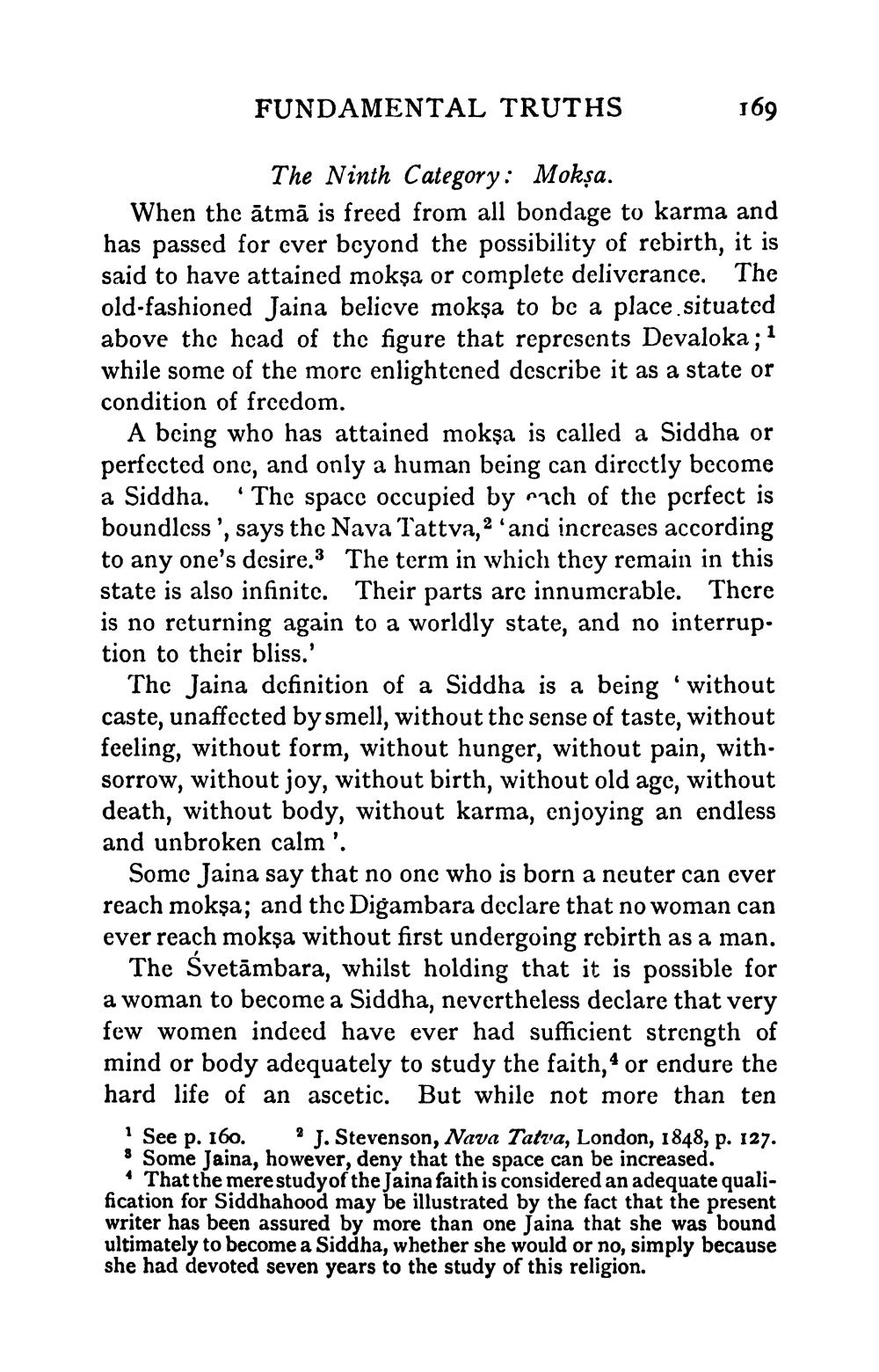________________
FUNDAMENTAL TRUTHS
169
The Ninth Category: Mokșa. When the ātmā is freed from all bondage to karma and has passed for ever beyond the possibility of rebirth, it is said to have attained mokṣa or complete deliverance. The old-fashioned Jaina belicve mokşa to be a place situated above the head of the figure that represents Devaloka; 1 while some of the more enlightened describe it as a state or condition of freedom.
A being who has attained mokşa is called a Siddha or perfected one, and only a human being can directly become a Siddha. "The space occupied by mach of the perfect is boundless', says thc Nava Tattva,? 'and increases according to any one's desire. The term in which they remain in this state is also infinite. Their parts are innumerable. There is no returning again to a worldly state, and no interruption to their bliss.'
The Jaina definition of a Siddha is a being without caste, unaffected by smell, without the sense of taste, without feeling, without form, without hunger, without pain, with. sorrow, without joy, without birth, without old age, without death, without body, without karma, enjoying an endless and unbroken calm'.
Some Jaina say that no one who is born a neuter can ever reach mokşa; and the Digambara declare that no woman can ever reach mokşa without first undergoing rebirth as a man.
The Svetāmbara, whilst holding that it is possible for a woman to become a Siddha, nevertheless declare that very few women indeed have ever had sufficient strength of mind or body adequately to study the faith, or endure the hard life of an ascetic. But while not more than ten 1 See p. 160. J. Stevenson, Nava Tatva, London, 1848, p. 127.
Some Jaina, however, deny that the space can be increased. 4 That the mere study of the Jaina faith is considered an adequate qualification for Siddhahood may be illustrated by the fact that the present writer has been assured by more than one Jaina that she was bound ultimately to become a Siddha, whether she would or no, simply because she had devoted seven years to the study of this religion.




